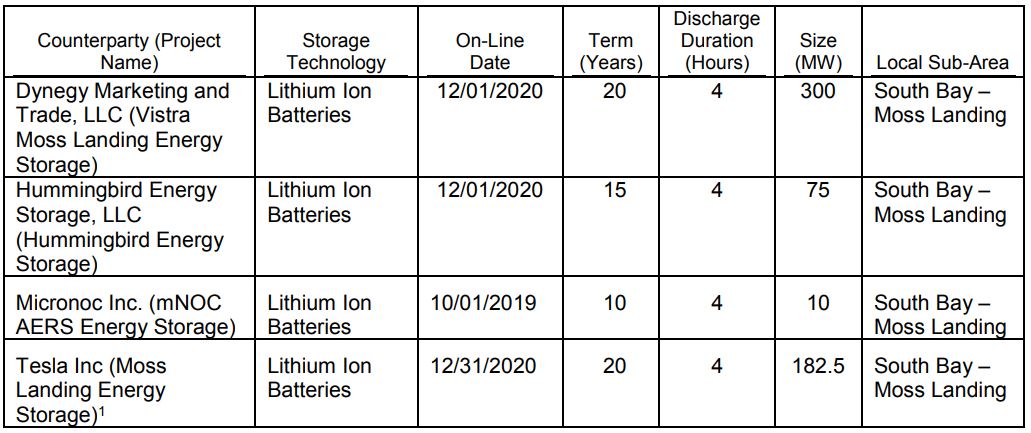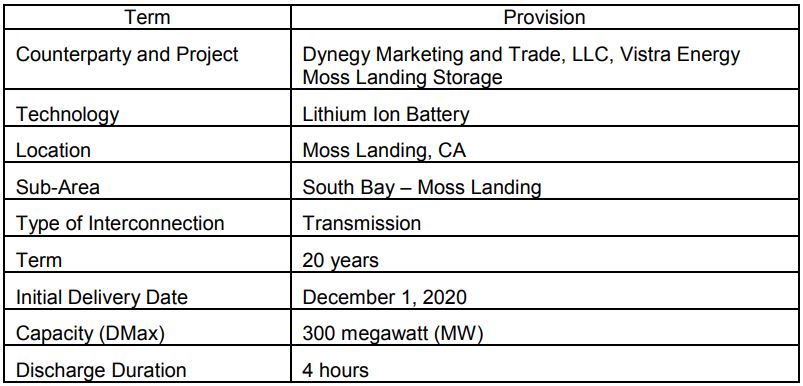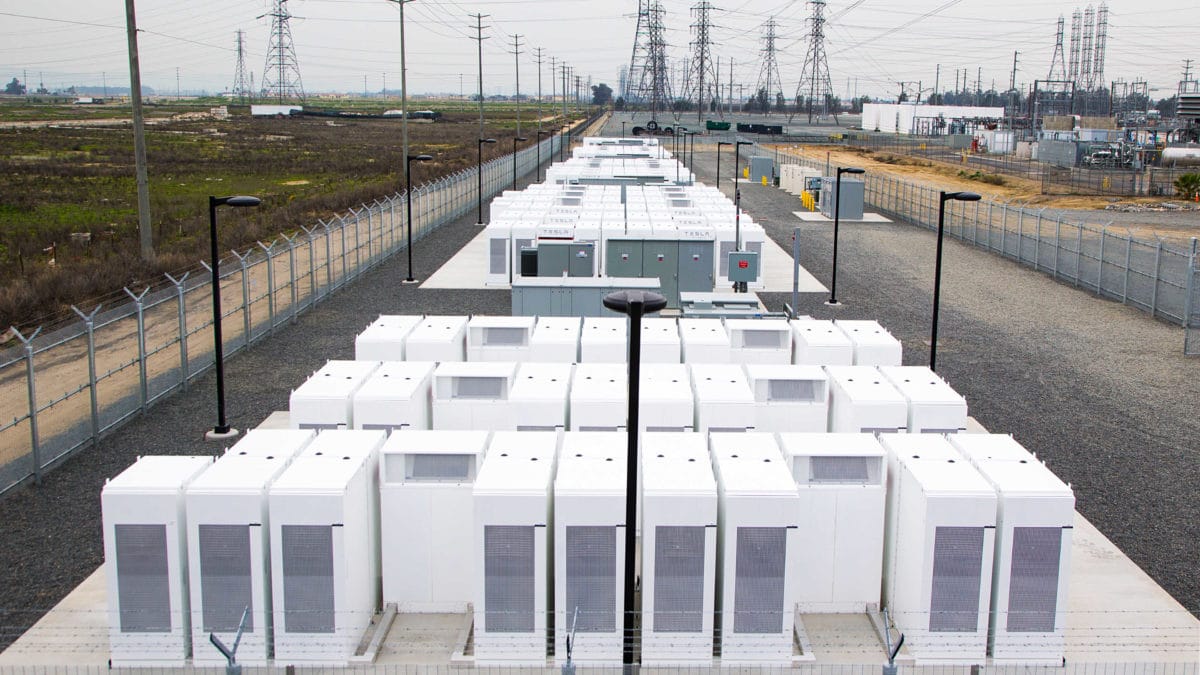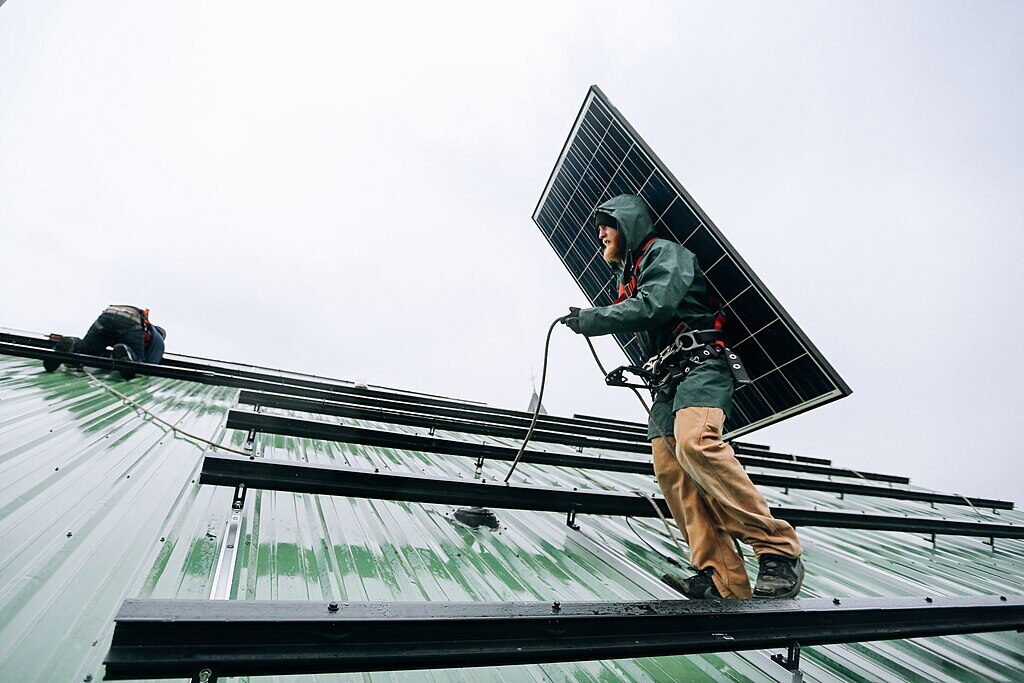We’re at the very front edge of a demand driven revolution on global electric grids, with lithium-ion batteries as the central resource. The headlines get to say largest every other week (largest utility scale DC-coupled, largest solar+storage, just the largest). And every once in a while, superlatives like ‘unprecedented‘ or ‘big hat and a respectfully-sized field of cattle‘ get slipped into an article. And all of this and more may be needed if the United States makes the revolutionary move toward a grid powered by 80% solar+wind.

The newest chapter in this movement comes from Pacific Gas & Electric (PG&E) as it seeks approval for four energy storage projects (PDF), each with a slightly different purpose, totaling 567 MW / 2.27 gigawatt-hours (GWh). Among the four projects are two that would be the largest lithium ion batteries globally on their own, including one that would be the largest chemical battery globally.
The four projects are to be located near the already existing infrastructure of the Moss Landing Power Plant, on California’s Central Coast near Monterey. PG&E received approximately 100 offer variations, which represented 29 projects submitted by developers.
The largest of the four projects will be owned by Dynergy, a subsidiary of Vistra Energy Corp (not to be confused with power company Dynegy). Vistra Energy is already developing the largest energy storage system in Texas, recently announced as a complement to the 180 MW Upton solar power plant.

The Vistra Energy project would be directly connected to transmission infrastructure through an adjacent 500 kV substation that was used for the now-retired unit 6 at the Moss Landing power plant.
In an email to pv magazine, Vistra Energy noted that their battery would be able to deliver 2,400 MWh of discharge per day – meaning two 1,200 MWh cycles per day, essentially doubling the practical size of the unit. The company noted that no battery manufacturer had been chosen for the project yet.
The Tesla Energy power plant, with proposed location below, is to be built at Moss Landing in a six-acre space, and will also make use of infrastructure previously used for fossil fuel generation.

The Tesla facility is proposed to be sized at 182.5 MW / 730 MWh – which itself would be the second largest publicly acknowledged energy storage project, behind a 200 MW / 800 MWh flow battery currently under construction in China. This is probably the 1 GW battery Elon Musk referenced in a recent earnings call, as Electrek.co has reported that the project contains a utility option to increase the system duration from four to six hours (this has been confirmed by Tesla in their Q2 earnings call).
This duration increase would mean an increase in capacity from 730 MWh to 1095 MWh, along with marking an important step forward in duration sizing from the current standard of four hours to six hours.
Additionally, with this request it appears that PG&E is adding storage well beyond its legal requirements. California requires the state’s three investor-owned utilities to procure 1,325 MW of storage by the end of 2020, and PG&E’s share is 580 MW.
EDIT – Tesla 1GWh+ confirmed
This content is protected by copyright and may not be reused. If you want to cooperate with us and would like to reuse some of our content, please contact: editors@pv-magazine.com.











By submitting this form you agree to pv magazine using your data for the purposes of publishing your comment.
Your personal data will only be disclosed or otherwise transmitted to third parties for the purposes of spam filtering or if this is necessary for technical maintenance of the website. Any other transfer to third parties will not take place unless this is justified on the basis of applicable data protection regulations or if pv magazine is legally obliged to do so.
You may revoke this consent at any time with effect for the future, in which case your personal data will be deleted immediately. Otherwise, your data will be deleted if pv magazine has processed your request or the purpose of data storage is fulfilled.
Further information on data privacy can be found in our Data Protection Policy.